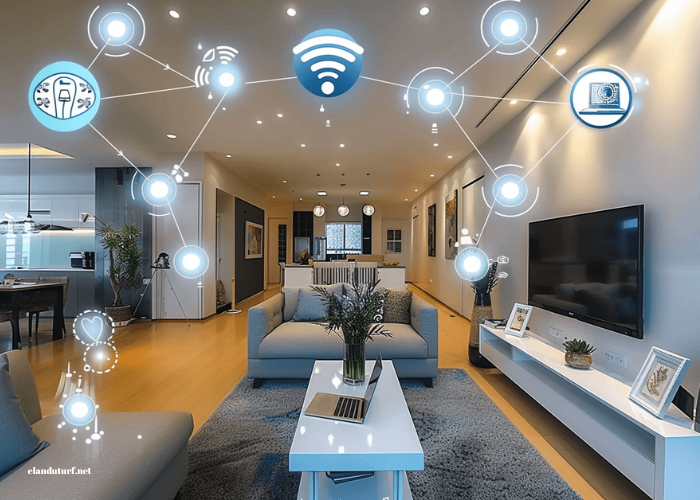The concept of a smart home has transitioned from the realm of science fiction into a transformative reality, redefining how we interact with our living spaces. With advancements in technology, the smart home revolution is not merely a trend; it is a significant evolution in modern living. This article explores the various aspects of the smart home revolution, including the technology behind it, its impact on daily life, benefits, challenges, and future trends.
Understanding Smart Home Technology
At its core, a smart home integrates various devices and systems that communicate with each other to enhance convenience, security, and efficiency. The foundation of smart home technology lies in the Internet of Things (IoT), a network of interconnected devices that collect and exchange data. These devices can range from simple smart bulbs to complex home automation systems that control lighting, temperature, security, and entertainment.
Key Components of Smart Homes
- Smart Devices: These include smart speakers (like Amazon Echo and Google Nest), smart thermostats (like Nest), smart locks, and smart cameras. These devices can be controlled remotely and often feature voice activation capabilities.
- Home Automation Systems: These systems allow users to automate their homes through scheduling or programming. For instance, you can set your lights to turn on at sunset or have your thermostat adjust based on your daily routine.
- Central Hubs: Devices like the SmartThings Hub or Apple HomePod serve as control centers for managing all smart devices in the home. They enable seamless communication between devices from different manufacturers.
- Connectivity: Smart homes rely on Wi-Fi, Bluetooth, or Zigbee protocols to facilitate communication between devices. A robust internet connection is crucial for the smooth operation of smart home systems.
Enhancing Daily Living Experiences
Convenience and Comfort
One of the most significant advantages of a smart home is the unparalleled convenience it offers. Imagine arriving home after a long day at work, and your smart home recognizes your presence. The lights automatically turn on, your favorite music starts playing, and the thermostat adjusts to your preferred temperature.
Additionally, smart home systems can be programmed to perform routine tasks automatically. For example, a smart coffee maker can start brewing your morning cup as soon as your alarm goes off, and smart blinds can open gradually with the sunrise, allowing natural light to fill your home.
Improved Energy Efficiency
Smart homes contribute to significant energy savings, aligning with the growing demand for sustainable living. Smart thermostats learn your heating and cooling preferences, optimizing energy use based on occupancy patterns. They can also be programmed to adjust when you are away, reducing energy waste.
Smart lighting systems allow users to control lights remotely or set schedules, ensuring lights are turned off when not in use. Energy monitoring systems can provide insights into usage patterns, helping homeowners identify areas where they can cut back on energy consumption.
Enhanced Security
Home security is a top priority for many homeowners, and smart home technology provides an array of solutions to enhance safety. Smart security systems include features like motion sensors, smart locks, and video surveillance that can be monitored remotely through smartphone applications.
For instance, smart doorbells with cameras allow homeowners to see who is at their door in real-time, even when they are not at home. In addition, homeowners can receive alerts if any unusual activity is detected, giving them peace of mind and enabling them to take action if necessary.
Integration of Health and Wellness
The smart home revolution also extends to health and wellness. Devices like smart air purifiers and humidifiers can monitor and improve indoor air quality, which is crucial for overall well-being. Wearable health technology can integrate with smart home systems to monitor vital signs and provide alerts for any irregularities.
Moreover, smart kitchens can help individuals adhere to healthy eating habits by providing nutritional information and suggesting recipes based on the ingredients available. This integration of technology promotes healthier lifestyles and encourages mindful living.
The Social Impact of Smart Homes
Improved Quality of Life
Smart home technology enhances the quality of life for individuals and families. It fosters an environment that encourages relaxation, productivity, and well-being. For example, smart lighting can create different moods depending on the time of day or activity, whether it’s bright lighting for reading or soft lighting for movie night.
Moreover, smart home features can significantly assist individuals with disabilities or the elderly. Voice-activated devices enable easier interaction with technology, while automated systems can help manage daily tasks, providing greater independence.
The Rise of Smart Home Communities
As the demand for smart homes grows, so does the concept of smart home communities. These communities are designed to integrate smart technologies into their infrastructure, providing residents with enhanced living experiences. Features may include smart street lighting, community-wide Wi-Fi, and shared energy systems that optimize resource use.
Smart home communities also promote social interaction among residents through connected platforms that facilitate communication and event organization. This communal approach not only enhances individual living experiences but also fosters a sense of belonging and collaboration among neighbors.
Challenges and Considerations
Privacy and Security Concerns
While the benefits of smart homes are numerous, they also raise concerns regarding privacy and security. With devices collecting and transmitting data, there is a risk of unauthorized access or data breaches. Homeowners must ensure that their smart devices are secure, using strong passwords, enabling two-factor authentication, and keeping software updated.
Additionally, there is an ongoing debate about the extent to which companies collect user data and how it is utilized. Transparency and user control over personal data are essential for building trust in smart home technology.
Compatibility and Interoperability
Another challenge within the smart home revolution is the compatibility of devices from different manufacturers. Not all smart devices work seamlessly together, leading to potential frustrations for users. The industry is gradually moving towards standardization, but it remains essential for consumers to research compatibility before investing in smart home devices.
Initial Costs and Investment
The initial investment for creating a smart home can be significant, as the cost of devices and installation adds up. However, many consumers view it as a worthwhile investment due to the long-term savings associated with energy efficiency and enhanced quality of life. As technology advances, prices are expected to decrease, making smart homes more accessible to a broader audience.
Future Trends in Smart Home Technology
Artificial Intelligence and Machine Learning
The future of smart homes is heavily intertwined with advancements in artificial intelligence (AI) and machine learning. These technologies will enable devices to learn and adapt to user behavior more effectively, enhancing personalization. For example, AI-powered assistants will become more intuitive, anticipating user needs and providing proactive suggestions.
Integration of Renewable Energy Sources
As environmental consciousness grows, the integration of renewable energy sources into smart homes will become more prevalent. Solar panels, battery storage systems, and smart energy management will allow homeowners to generate and optimize their energy use sustainably. This shift not only reduces energy costs but also contributes to a greener planet.
Voice and Gesture Control
Voice-activated control has already revolutionized how we interact with our smart devices, and the future promises even more advanced capabilities. Gesture control, powered by computer vision technology, will allow users to interact with their smart home systems without physical contact, making it more intuitive and user-friendly.
Enhanced Home Automation
As smart home technology continues to evolve, home automation will become more sophisticated. Integration with other smart systems, such as healthcare monitoring and transportation services, will create seamless experiences for users. For instance, your smart home could monitor your health data and suggest adjustments to your living environment for optimal well-being.
Conclusion
The smart home revolution is reshaping modern living, offering unprecedented convenience, efficiency, and comfort. As technology advances, we can expect even more innovative solutions that will further enhance our living experiences. Despite the challenges and concerns surrounding privacy and compatibility, the overall benefits of smart homes are undeniable.
As we embrace this revolution, it is crucial to remain informed and engaged with the evolving technology landscape. By doing so, we can harness the full potential of smart home systems to create living environments that not only meet our needs but also promote sustainability, health, and well-being. The future of smart homes is bright, and as we continue to innovate, the possibilities for enhancing our modern living experiences are limitless.




